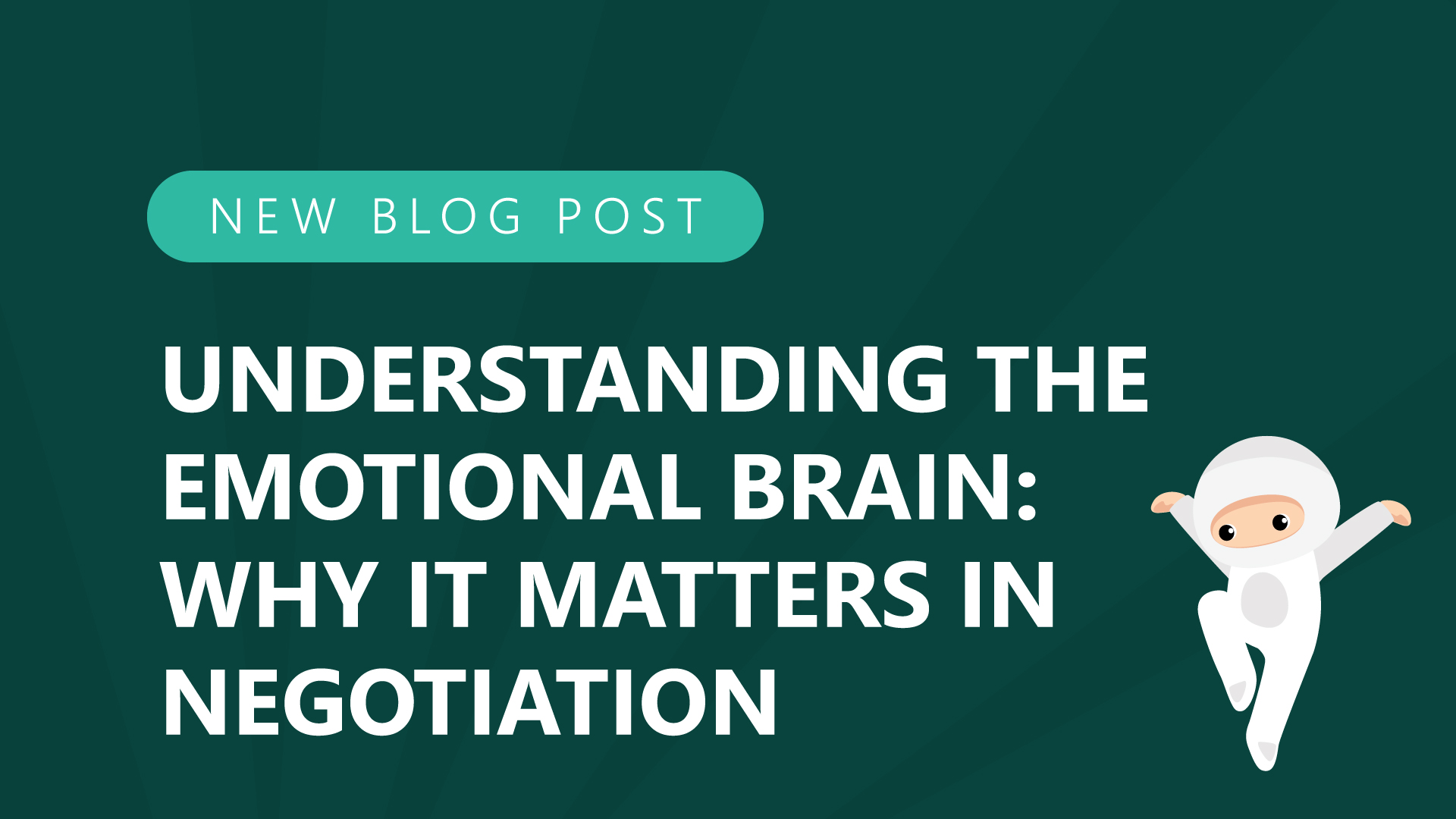The role of psychology in negotiation is quite fascinating. Understanding how the human brain works can lend you key insights into understanding the human psyche. Humans experience a variety of emotions—especially in the negotiation process—and acknowledging those emotions is one of the best ways to overcome them.
Kwame Christian was featured on episode 135 of Negotiations Ninja and one of the topics covered in the episode was how our brains function. In Kwame’s book, ‘Nobody Will Plan With Me” he shares some simple psychology that’s important to understand to become a master of your craft.
Cortisol clouds our thinking
Cortisol is a steroid hormone that the body produces in reaction to stress. While it performs many functions, it is best known as the hormone behind the “fight-or-flight” response. When you begin to observe someone getting frustrated or upset during a negotiation, they likely have heightened levels of cortisol. That’s typically when we have moved into an emotional state where we are not at our cognitive best. In Kwame’s book, he shares a simple “compassionate curiosity framework” that he uses to deescalate stressful situations:
- Acknowledge and validate emotions
- Get curious with compassion
- Engage in joint problem-solving
You must acknowledge and validate what they’re feeling, ask compassionate and leading questions, and work together to find a mutually beneficial solution.
How to make the move from emotion to logic
The amygdala is the part of your brain that is running front and center when you’re feeling emotional—angry, afraid, sad, etc. It is the emotion center of your brain. To move away from these complex negative emotions, we must activate the part of our brain that thinks logically—the prefrontal cortex.
The prefrontal cortex is part of your frontal cortex. Broadly speaking, It’s responsible for executive functioning. It handles the logical side of you—planning, strategizing, decision-making, problem-solving, and so forth.
Kwame points out that “In order for you to effectively label an emotion for yourself, you have to think logically about it.” To do so, you activate the ventromedial prefrontal cortex.
Moving the negotiation past the emotion
Figuring out the root cause of an emotion—either within yourself or in your counterparty—is often necessary to continue forward in the negotiation process. This can be done by following Kwame’s framework:
- What emotion are you feeling? Perhaps you’re feeling angry.
- Why are you upset? What’s causing you to react this way?
- Acknowledge the reasoning, face it, bring it into the open, and find a solution to the problem.
Going through this process helps you begin to think clearly and find solutions to get what you need—without feeling bad after the fact. You must be compassionate with yourself and remember that you’re your own worst critic. Likewise, be compassionate and understanding with your counterparty. It is possible to work through emotion and conflict to reach an agreeable solution for both parties.
Another way to access the prefrontal cortex and logical reasoning is through mindfulness—i.e. prayer, meditation, breathing exercises, etc. It may sound a little crazy, but science has proven it’s worth an impact on your brain.
To learn more about negotiating through emotion, the human brain, conflict-resolution, and to hear more about Kwame’s book—listen to episode 135 of the Negotiations Ninja podcast.

